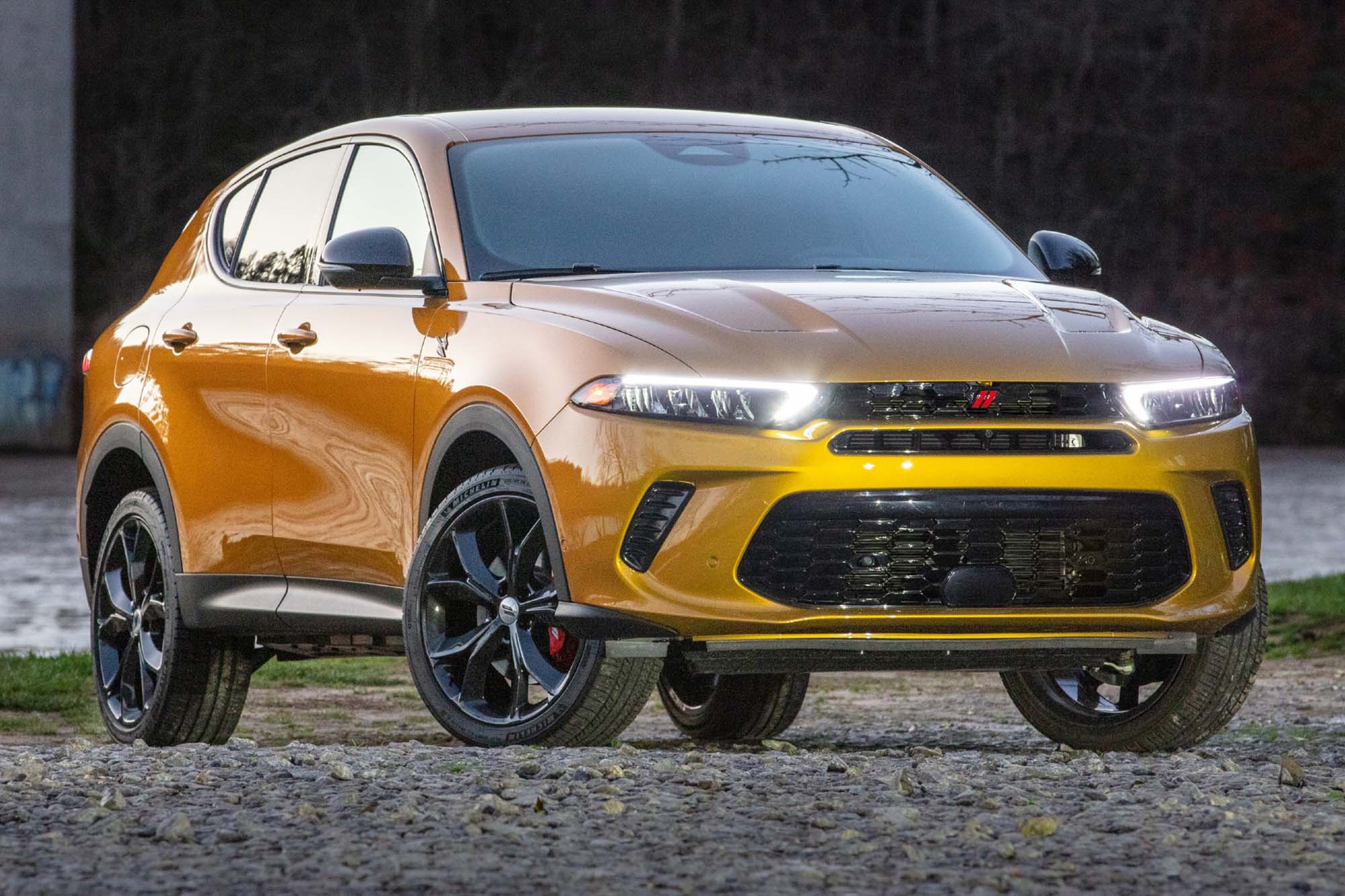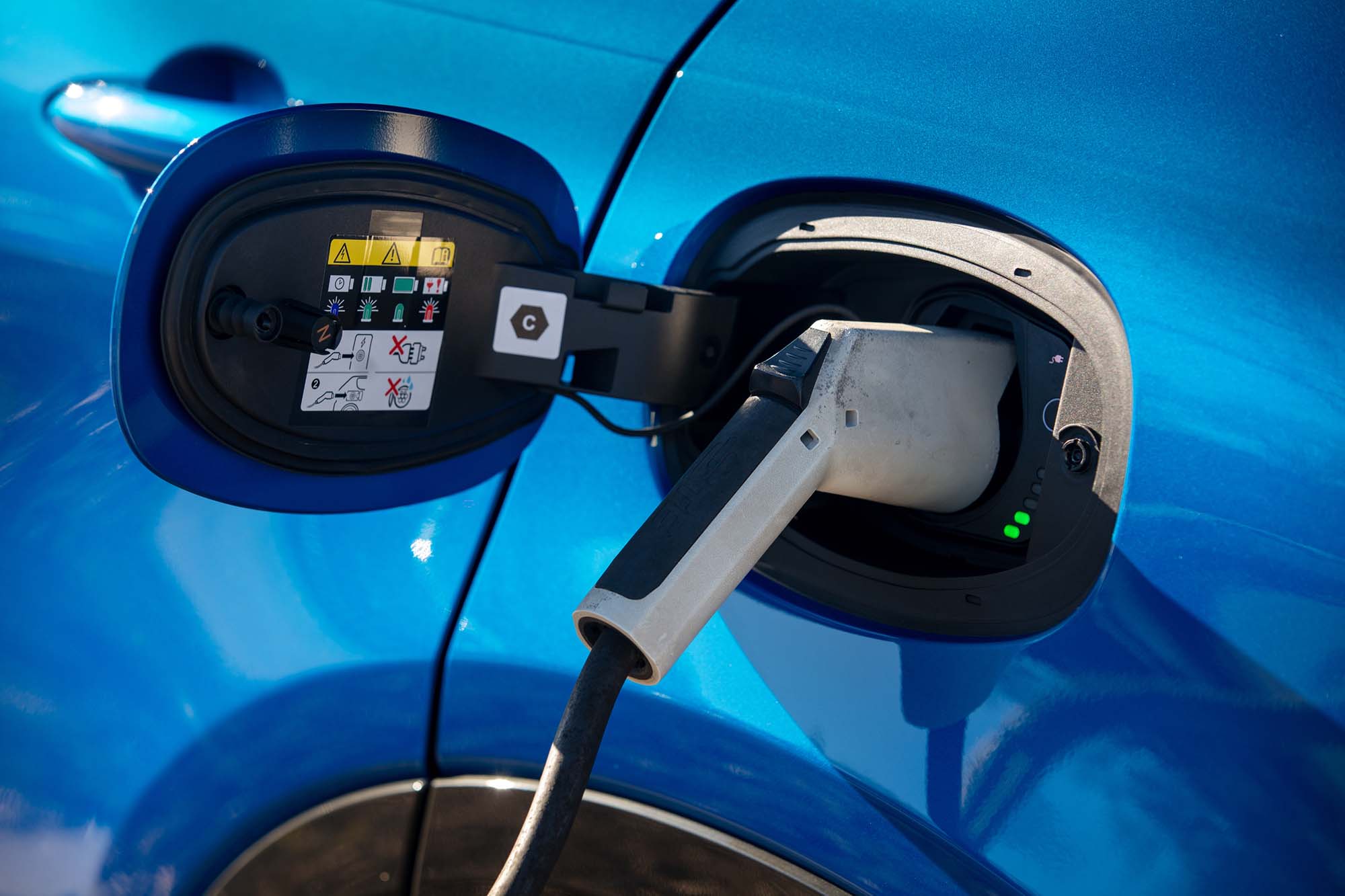The Hornet R/T Is the First Plug-In Hybrid From Dodge
The new powertrain aims to balance performance and efficiency.
 Dodge
Dodge
The Dodge Hornet debuted for the 2023 model year, and competes in the sporty compact crossover segment along with models such as the Honda HR-V, Hyundai Kona, and Mazda CX-30.
Though all first-year examples of the Hornet were solely propelled by gasoline, the electrified Hornet R/T joins the lineup for 2024. It marks Dodge's first entry in the growing plug-in-hybrid (PHEV) segment.
The first fully electric Dodge is expected when the Charger Daytona arrives later this year.

Gas Mileage Improves With the Dodge Hornet Plug-In Hybrid
The entry-level Dodge Hornet GT and GT Plus use the same turbocharged 2.0-liter making 268 horsepower available at the model's debut and are EPA rated at 21/29/24 mpg city/highway/combined. But upper trim levels now feature a PHEV powertrain.
The Hornet R/T and R/T Plus models pack a turbocharged 1.3-liter four-cylinder engine, a 15.5 kWh lithium-ion battery, and a rear-mounted electric motor. There's a total of 288 horsepower and 383 lb-ft of torque on tap.
When the dial is set to Hybrid mode, the gas engine works in tandem with the Hornet R/T's electric propulsion system to provide quicker acceleration and improved overall fuel economy. The PHEV is EPA rated at 77 MPGe and 29 mpg.
 Dodge
Dodge
The Hornet R/T Can Operate in Fully Electric Mode
With a fully charged battery pack, the Dodge Hornet R/T has an EPA-rated all-electric range of 33 miles, and it can travel at speeds up to 84 mph without burning a drop of gas. Once the Hornet's electrons run out, the gas engine automatically engages to boost the overall range to 360 miles.
 Dodge
Dodge
The Hornet Can Be Charged Like an Electric Vehicle
To replenish its battery pack the Hornet can be connected to a wall outlet or charging station. As with most plug-in-hybrid vehicles, however, the Hornet lacks fast-charging capabilities that are commonplace for pure electric vehicles. The Mitsubishi Outlander PHEV is an exception and can use a Level 3 charger.
Because the Hornet has a smaller battery pack than a typical EV, a Level 2 charger provides enough juice to charge its battery from empty in as little as 2.5 hours. The Hornet can also replenish its battery via regenerative braking, which recovers kinetic energy as you slow the car and sends it to the onboard battery.
Written by humans.
Edited by humans.
 Drew Johnson
Drew JohnsonI have been a professional automotive enthusiast since 2007, featured on several nationally-recognized sites. I attended Miami University, where I earned a business degree. Car nut at heart.
Related articles
View more related articles